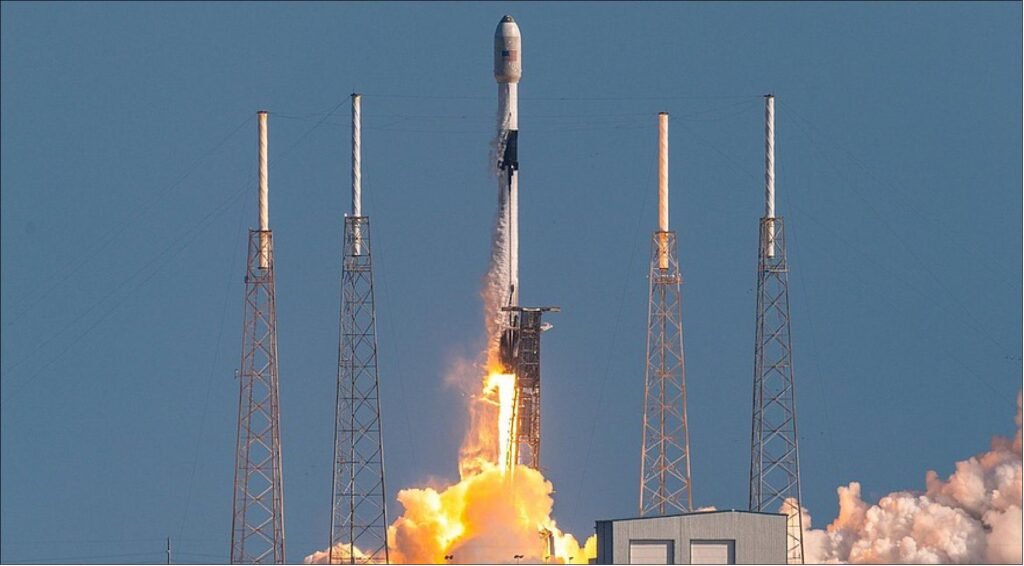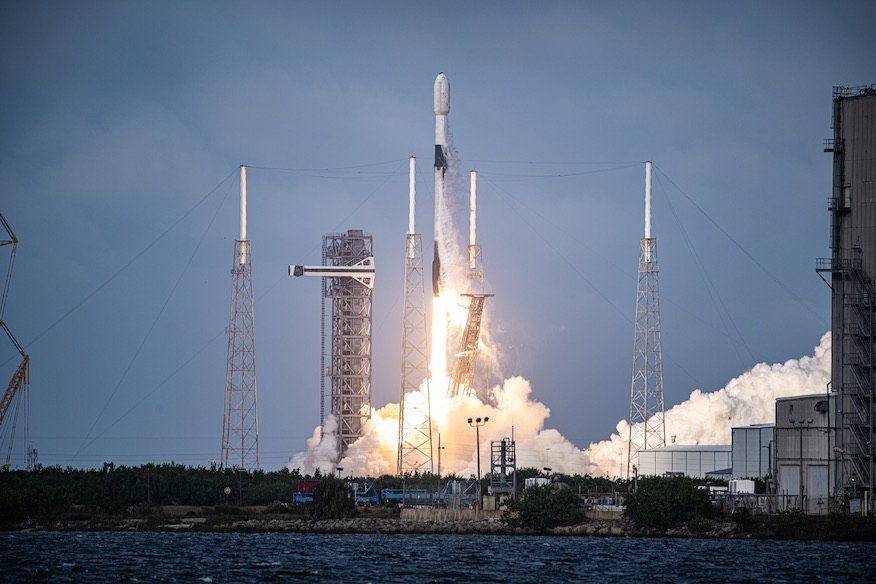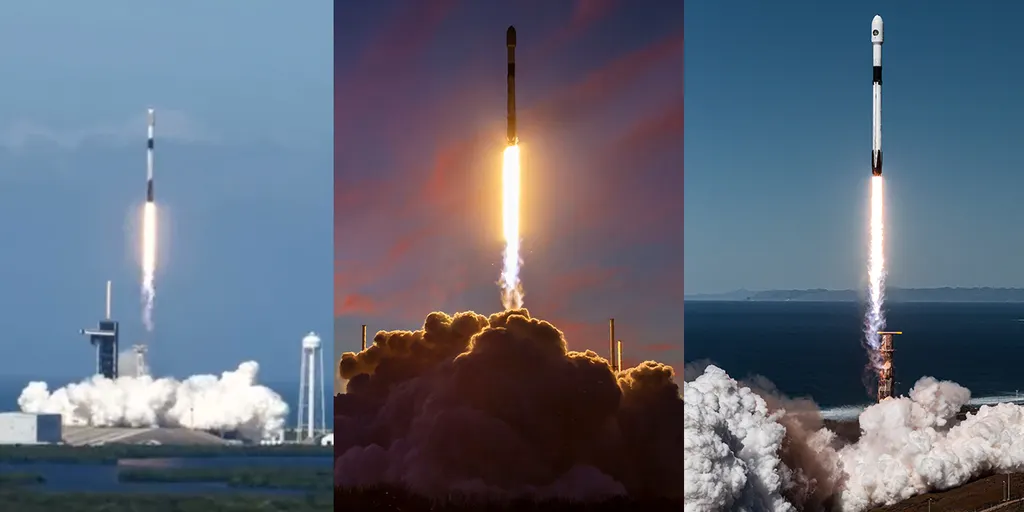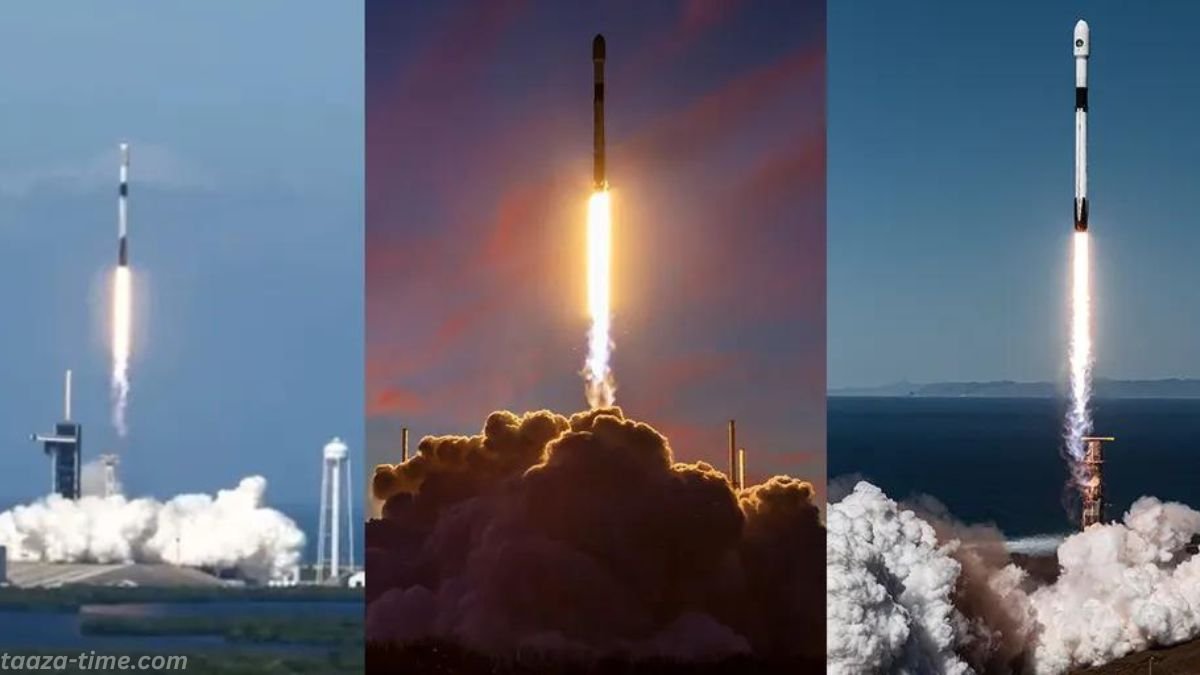Hello Friends! In this article has been provide information about SpaceX launches first of 2 rockets today in Starlink double Header. SpaceX launched the first of two more batches of its Starlink internet satellites today (Jan. 28), as part of doubleheader liftoffs just three hours apart.
A Falcon 9 rocket topped with 23 Starlink spacecraft launched from NASA’s Kennedy Space Center (KSC) in Florida today at 6:15 p.m. EST (2315 GMT).13 hours ago
SpaceX launches first of 2 rockets today: Another Falcon 9 will carry 22 more Starlinks skyward from Vandenberg Space Force Base in California, during a nearly four-hour window that opens today at 9:16 p.m. EST (6:16 p.m. local time, and 0216 GMT on Jan. 29).

In an impressive dual-launch event, SpaceX successfully deployed both a military spaceplane and 23 Starlink satellites into orbit. The launch took place at the Kennedy Space Center and marked the commencement of an extraordinary doubleheader in space exploration.
SpaceX launches first of 2 rockets today:
A robust SpaceX Falcon Heavy rocket initiated the proceedings, roaring away from the Kennedy Space Center with the force of its fiery engines. The primary objective of this launch was to place an unmanned X-37B spaceplane into orbit. The mission details, being classified, hinted at a prolonged duration, underscoring its military nature.
Simultaneously, at the Cape Canaveral Space Force Station, another dedicated team of SpaceX engineers orchestrated the launch of a reliable single-core Falcon 9 rocket. Remarkably, this liftoff occurred merely two hours and 54 minutes after the Falcon Heavy launch, setting a potentially record-breaking timeframe for two U.S. orbit-class missions. This dual achievement marked SpaceX’s 95th and 96th launches of the year, showcasing the company’s prolific pace in space exploration.{SpaceX launches first of 2 rockets today}
These endeavors highlight SpaceX’s commitment to pushing the boundaries of space technology, delivering both classified military missions and expanding the Starlink satellite constellation for global connectivity. The back-to-back launches not only demonstrate technological prowess but also underscore the efficiency and frequency of SpaceX’s space operations in 2023.

The Falcon Heavy initiated the launch sequence, captivating both local residents and tourists with a stunning display. The rocket, propelled by 27 Merlin engines arranged in three strapped-together Falcon 9 boosters, ignited at 8:07 p.m. EST. The ground-shaking roar and the rush of flame marked the commencement of a remarkable journey.
Soaring from the Kennedy Space Center, the rocket ascended atop an impressive five million pounds of thrust. Its trajectory veered northeast, steadily gaining speed as the engines consumed propellants, and the vehicle shed weight.
Originally scheduled for December 10, the launch faced delays due to anticipated adverse weather conditions and subsequent ground equipment issues. The rocket underwent necessary adjustments in a SpaceX hangar before being returned to pad 39A earlier this week.
This time, the launch proceeded seamlessly. The two side boosters, on their fifth flight each, played a crucial role in propelling the rocket out of the dense lower atmosphere. After two-and-a-half minutes, they detached from the core stage. In a well-choreographed maneuver, the boosters swiftly reversed course, heading back towards the Cape Canaveral Space Force Station.{SpaceX launches first of 2 rockets today}
Accompanied by window-rattling sonic booms, both boosters executed flawless touchdowns, marking the 40th and 41st successful landings in Florida. The precision of these landings underscores SpaceX’s mastery of reusable rocket technology and their commitment to advancing the efficiency of space travel.

The Pentagon’s Rapid Capabilities Office, in collaboration with the U.S. Space Force, operates two nearly identical X-37B Orbital Test Vehicles (OTVs). These vehicles play a crucial role as test platforms for evaluating avionics, advanced sensors, and reusable spacecraft components. Additionally, they serve as a versatile platform for experiments that can be brought back to Earth for thorough analysis.
Built by Boeing, the X-37B resembles a scaled-down version of the space shuttle, featuring delta wings, heat shield tiles, and a compact payload bay. Notably, it differs from NASA’s space shuttle in its power source. While the space shuttle relied on fuel cells in orbit, the X-37B is equipped with an extendable solar array, enabling extended missions.{SpaceX launches first of 2 rockets today}
These compact orbiters are designed to conclude their missions with runway landings. Vandenberg Space Force Base in California or the Kennedy Space Center in Florida serves as the landing sites, utilizing the extensive 3-mile-long runways originally constructed for the space shuttle program.
See Also:- Breaking Records: BTS V and IU’s First 2024 Single Hits All-Kill – Love Triumphs on the Charts
The most recent X-37B mission commenced with a launch atop a United Launch Alliance Atlas 5 rocket on May 17, 2020. The mission successfully concluded on November 12, 2022, with a touchdown at the Kennedy Space Center, marking an impressive duration of 908 days and 21 hours spent in space. The X-37B’s capabilities and longevity underscore its significance in advancing space exploration and technology.

FAQ’s:-
1. What is the purpose of the Starlink mission?
- SpaceX launches first of 2 rockets today. The Starlink mission aims to deploy a constellation of satellites to provide global broadband internet coverage, especially in remote and underserved areas.
2. How many rockets are being launched in the Starlink double-header?
- SpaceX plans to launch two rockets as part of the Starlink double-header, demonstrating the company’s commitment to expanding its satellite network.
3. What is the significance of Starlink for global connectivity?
- Starlink plays a pivotal role in bridging the digital divide by offering high-speed internet access to regions where traditional infrastructure is challenging to implement.
4. How many Starlink satellites will be deployed in these launches?
- The exact number of Starlink satellites deployed in each launch may vary. However, SpaceX typically deploys multiple satellites in a single mission to enhance coverage.
5. What rockets are being used for these launches?
- SpaceX employs its reliable Falcon 9 rockets to carry Starlink satellites into orbit, showcasing the versatility and reusability of their launch vehicles.
Conclusion:-
We hope you will like the article of taaza-time.com. complete information about it is given in this article of SpaceX launches first of 2 rockets today in Starlink double Header. SpaceX’s Starlink double-header showcases the company’s commitment to improving global connectivity and advancing space exploration technology. With the deployment of multiple satellites in each launch,
The mission not only addresses the digital divide but also highlights SpaceX’s ability to reuse reliable Falcon 9 rockets. The company’s consideration for the environment and collaboration with astronomers demonstrates a commitment to responsible space exploration. SpaceX launches first of 2 rockets today As Starlink aligns with SpaceX’s goal of making space accessible, the frequent launches suggest an ongoing effort to expand satellite constellations and enhance internet services. Stay tuned for more updates as SpaceX continues to shape the future of space-based communication.
READ MORE :-
- Super Bowl LVIII 2024: Your Ultimate Simple Guide to the Gridiron Extravaganza
- Beyond the Mic: Pauly Shore’s Legal Showdown Unveiled in Assault Lawsuit!
- Breaking Records: BTS V and IU’s First 2024 Single Hits All-Kill – Love Triumphs on the Charts
- Unveiling the Secrets of Sony’s Spider-Verse with ‘Madame Web






























